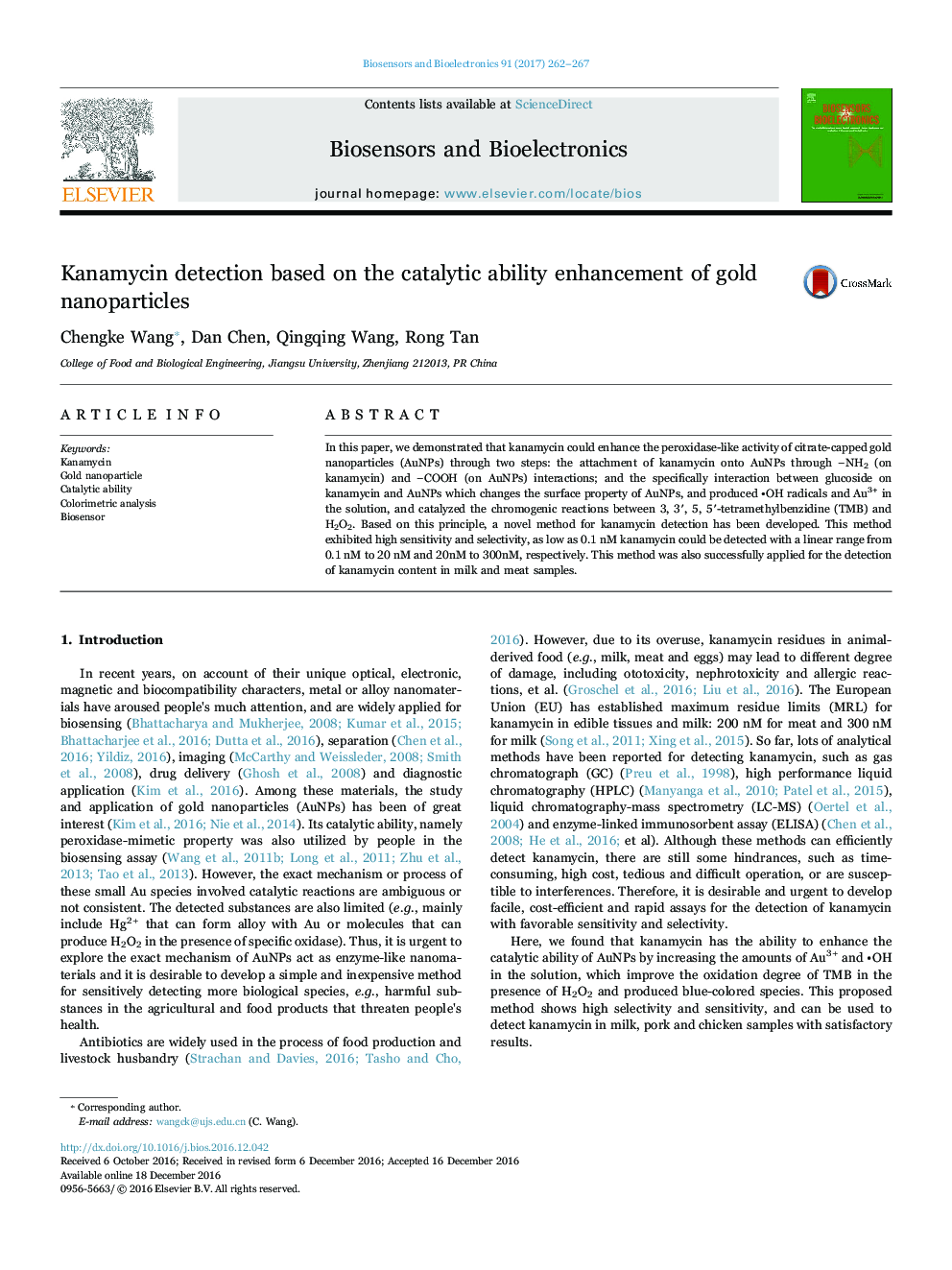| Article ID | Journal | Published Year | Pages | File Type |
|---|---|---|---|---|
| 5031158 | Biosensors and Bioelectronics | 2017 | 6 Pages |
Abstract
In this paper, we demonstrated that kanamycin could enhance the peroxidase-like activity of citrate-capped gold nanoparticles (AuNPs) through two steps: the attachment of kanamycin onto AuNPs through âNH2 (on kanamycin) and âCOOH (on AuNPs) interactions; and the specifically interaction between glucoside on kanamycin and AuNPs which changes the surface property of AuNPs, and produced
- OH radicals and Au3+ in the solution, and catalyzed the chromogenic reactions between 3, 3â², 5, 5â²-tetramethylbenzidine (TMB) and H2O2. Based on this principle, a novel method for kanamycin detection has been developed. This method exhibited high sensitivity and selectivity, as low as 0.1Â nM kanamycin could be detected with a linear range from 0.1Â nM to 20Â nM and 20nM to 300nM, respectively. This method was also successfully applied for the detection of kanamycin content in milk and meat samples.
- OH radicals and Au3+ in the solution, and catalyzed the chromogenic reactions between 3, 3â², 5, 5â²-tetramethylbenzidine (TMB) and H2O2. Based on this principle, a novel method for kanamycin detection has been developed. This method exhibited high sensitivity and selectivity, as low as 0.1Â nM kanamycin could be detected with a linear range from 0.1Â nM to 20Â nM and 20nM to 300nM, respectively. This method was also successfully applied for the detection of kanamycin content in milk and meat samples.
Related Topics
Physical Sciences and Engineering
Chemistry
Analytical Chemistry
Authors
Chengke Wang, Dan Chen, Qingqing Wang, Rong Tan,
